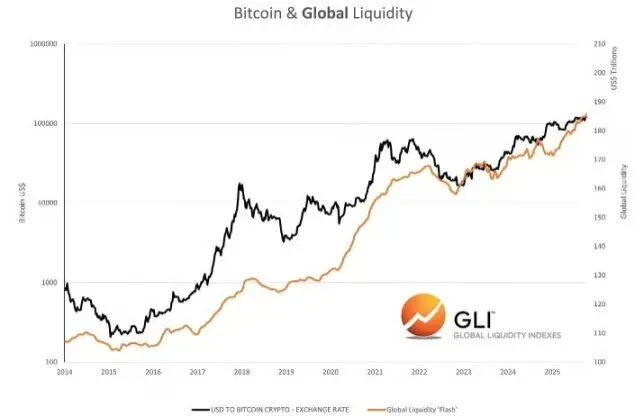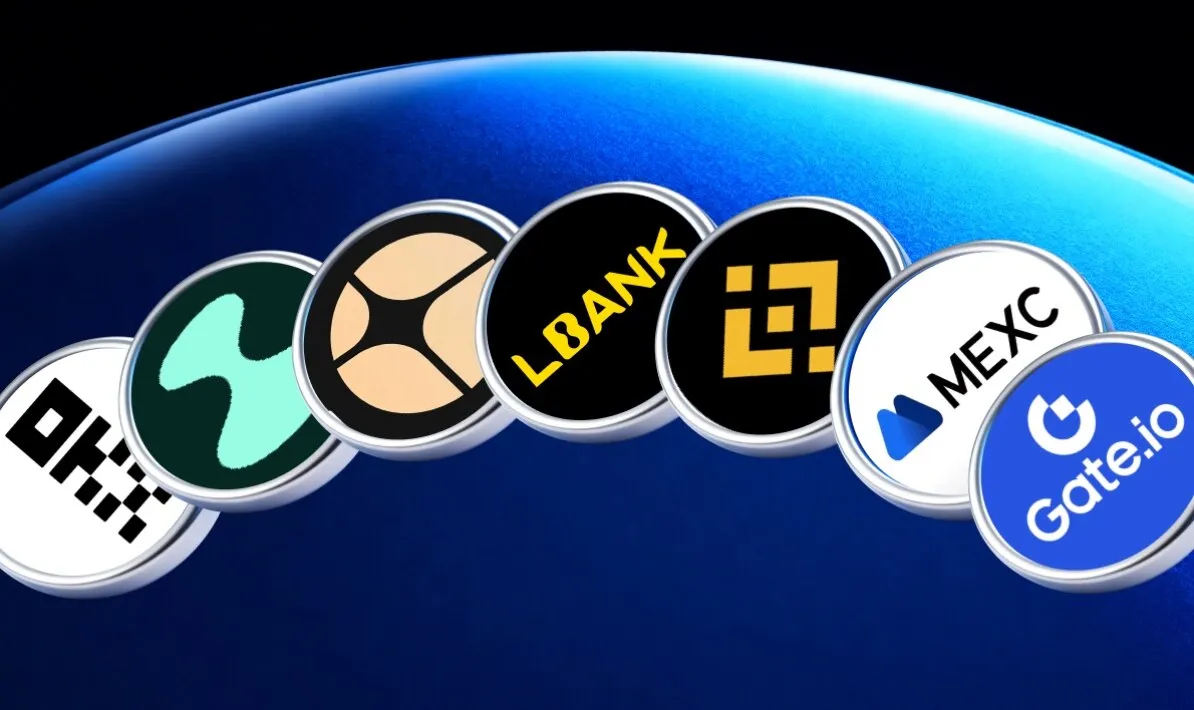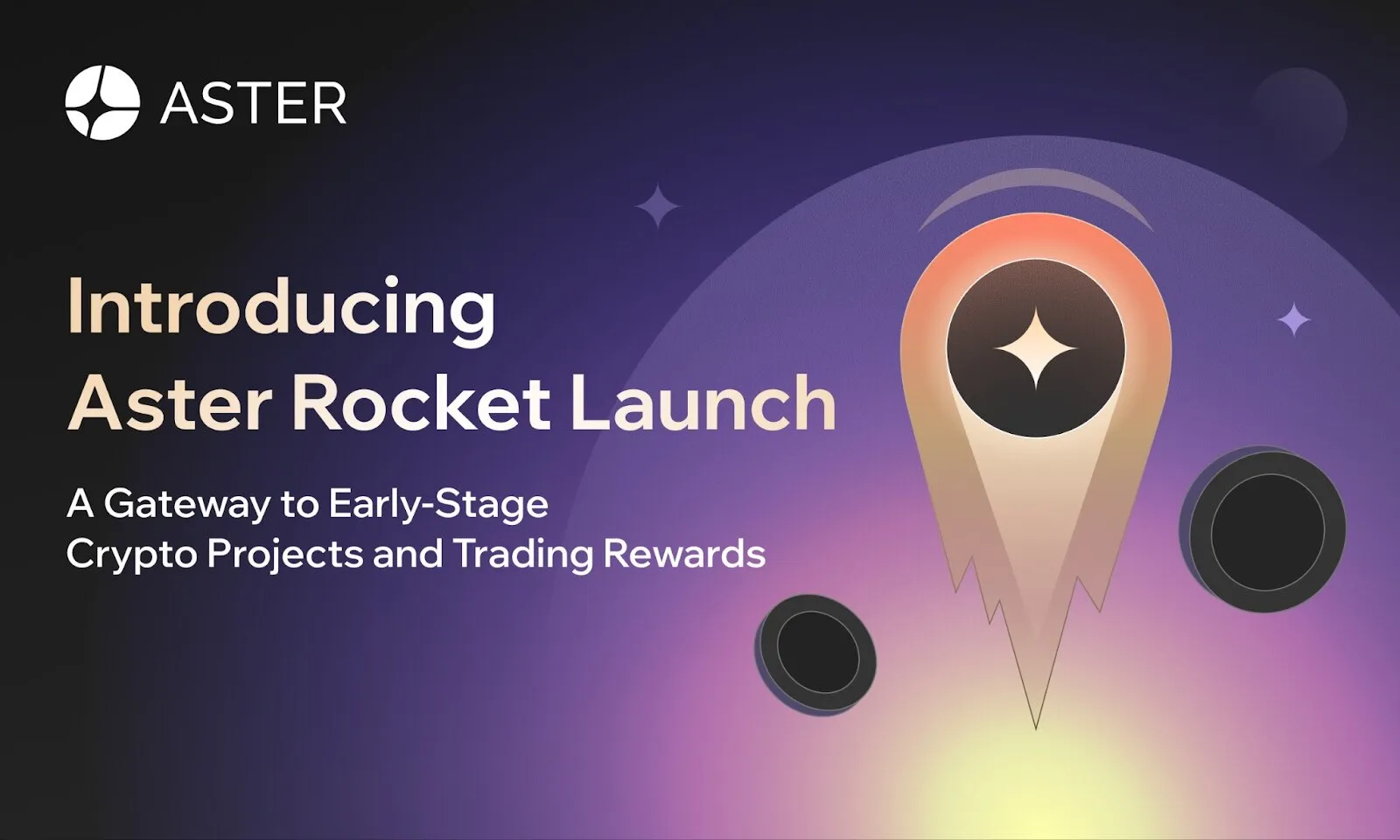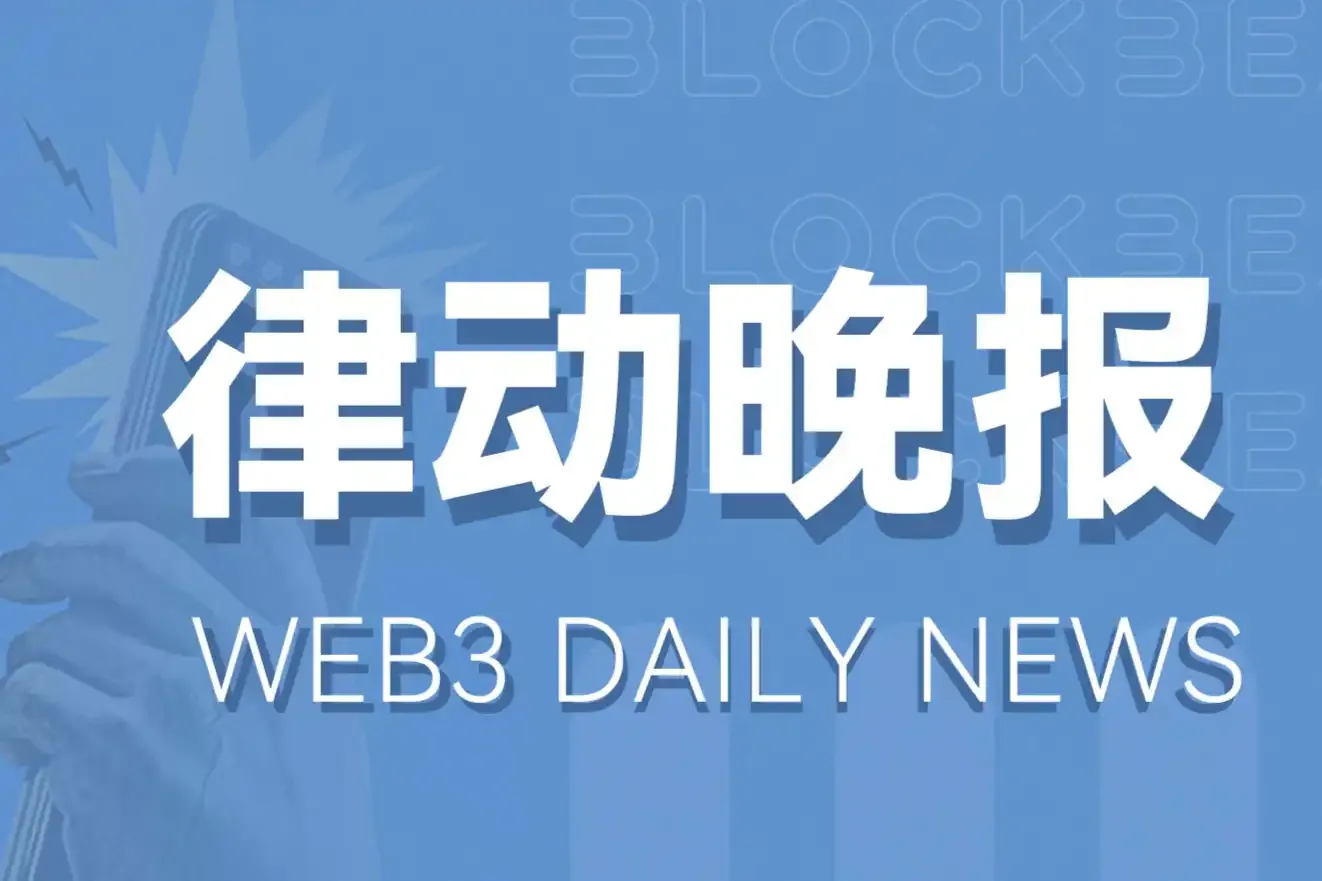Original | Odaily Planet Daily (@OdailyChina)
Author | Ethan (@ethanzhangweb3)_

On the evening of October 22 at 7:30 PM, the prediction platform Limitless suddenly posted: “Shall we TGE today?”
This unexpected question caused an uproar in the community, with most people thinking it was just another intern who “slipped” and posted, leading to a flood of jokes in the comments. Even the project CEO CJ (@cjhtech) quickly jumped in to comment: “intern wtf??” “who gave you this button?”
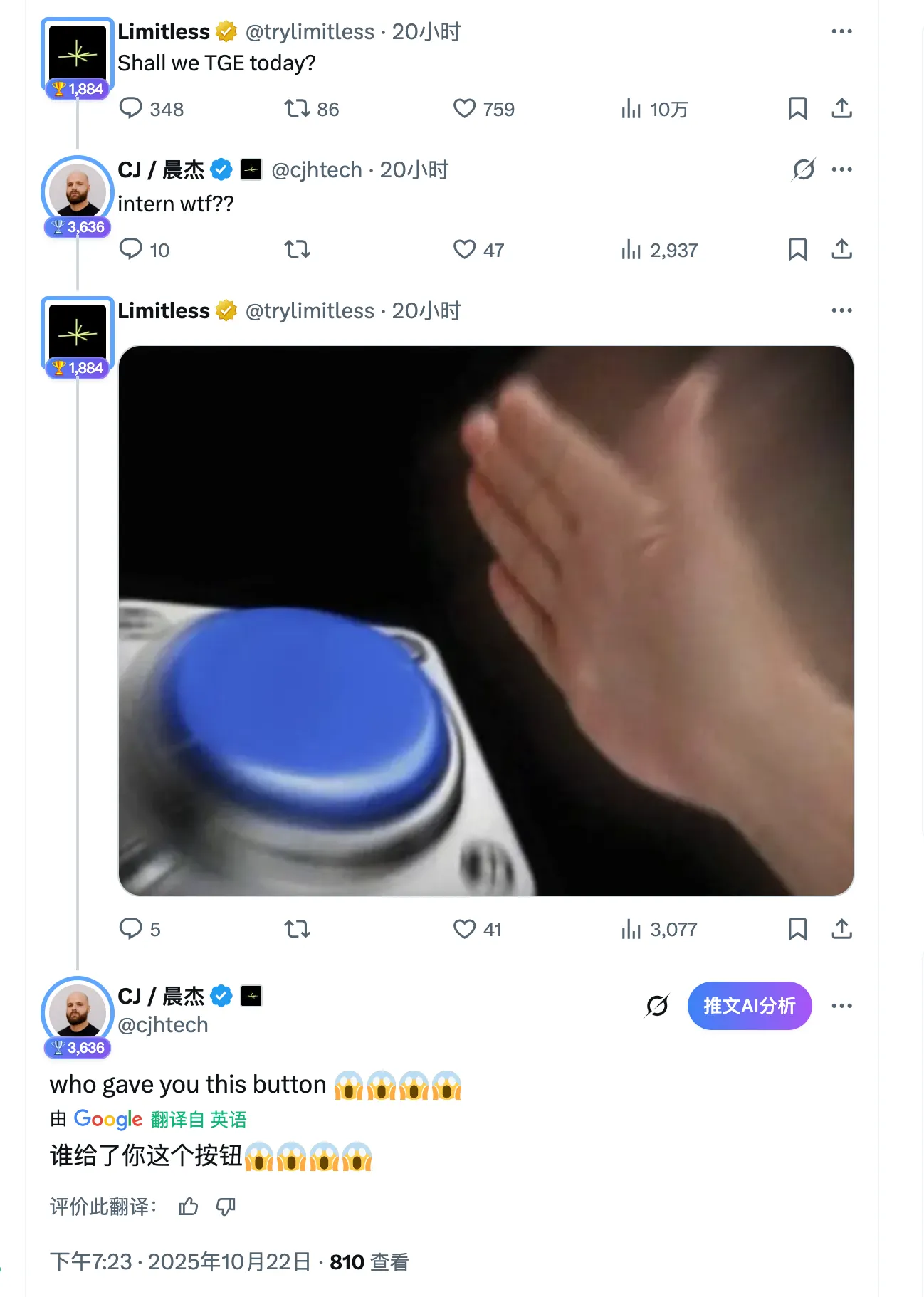
For a moment, netizens speculated that this was a joke or a “scripted” marketing stunt. However, just an hour later, the plot took a turn — Limitless officially announced the launch of TGE and simultaneously opened the LMTS token airdrop.
This series of “unexpected official announcements” caused the community to switch from “joke mode” to “attention mode,” revealing a more complex storyline behind the TGE.
Who is Limitless?
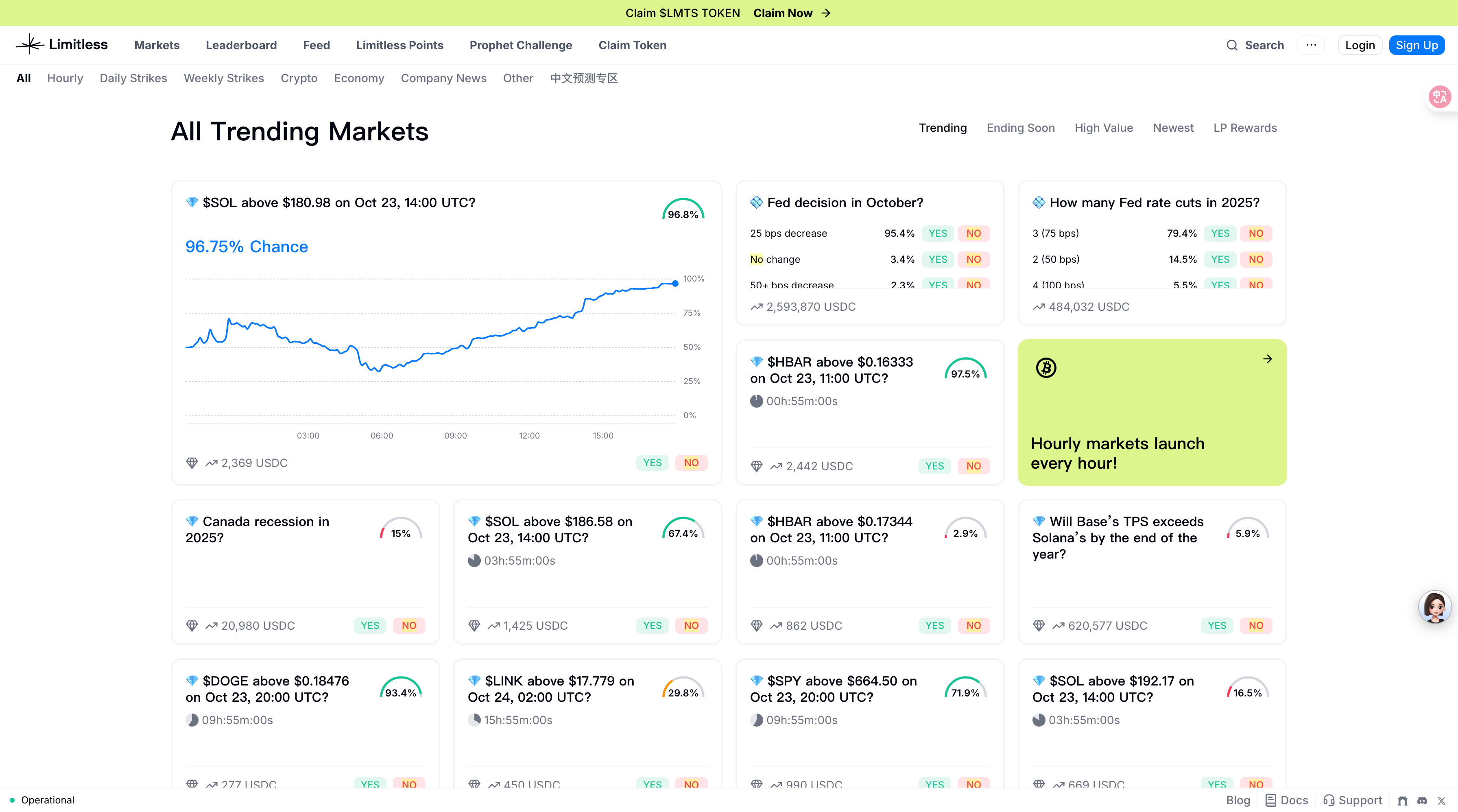
Limitless is a prediction market protocol based on the Base chain, featuring social attributes that allows users to create and participate in prediction markets across various fields such as crypto assets, stocks, sports, and social culture. The project has completed three rounds of financing, raising a total of $17 million, with investors including Coinbase Ventures, 1confirmation, Maelstrom, and other crypto investment institutions.
Mechanically, Limitless is similar to Polymarket: users participate in predictions by purchasing shares of specific event outcomes (usually “yes” or “no”), with winning shares settling at $1 at expiration, while losing shares become void.
According to the project white paper, before the outcome is determined, 1 share of “yes” and 1 share of “no” in the same market can be merged to redeem 1 collateral token (usually USDC or Wrapped ETH), locked by an on-chain smart contract, serving as the underlying collateral asset for the issued shares.
Unlike Polymarket, Limitless is attempting to overlay social scenarios and a “short-term quick game” mechanism on top of the prediction market, making speculative behavior lighter, faster, and more shareable.
And this TGE officially marks its entry into the “public attention” phase.
TGE: From Godly Opening to Trust Fracture
According to the official Blog, the total supply of LMTS tokens for this TGE is 1 billion, with a circulation of 13.159868%. The specific allocation is as follows:
- Kaito Pre-sale: 1.37%
- Investors: 25%
- Echo Round: 1.26%
- Team: 25%
- Ecosystem Rewards (Airdrop and Incentives): 24.37%
- Treasury: 13%
- Liquidity: 10%
At the same time, Limitless announced that the airdrop has now begun, with Limitless Points Season 1 traders and Wallchain Epoch 1 Quackers users potentially eligible for the airdrop.
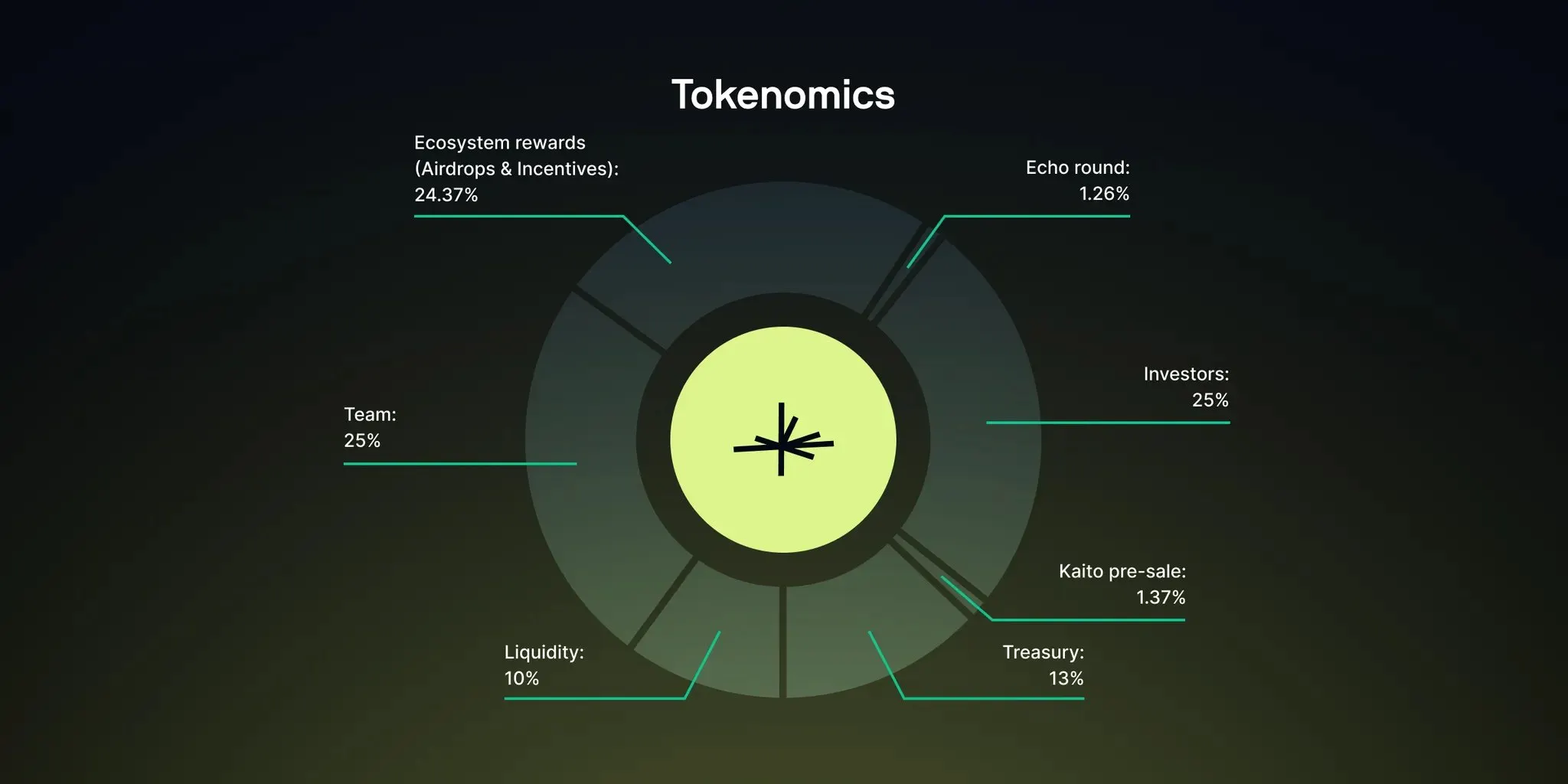
In the half hour after the TGE, the price movement of LMTS made it seem like a “godly opening.”
The buying sentiment driven by the hype pushed the price from below $0.2 directly to $0.8, a rise of over 400%. However, the good times didn’t last long, as the market quickly turned downward, dropping to a low of $0.196, with the current price having rebounded to $0.313.
To be honest, this kind of rhythm is too common in new coin launches: first a spike, then a drop, with the time window almost identical. Logically, such fluctuations shouldn’t raise suspicions, as short-term capital in the market is abundant, and price volatility is the norm.
However, this time’s drop made some people feel that something was off.
On October 22 at 22:58, KOL @ManaMoonNFT posted an on-chain tracking record on X, pointing out that the Limitless team appeared to be engaging in continuous selling. Monitoring data showed:
A team-associated wallet (0x3c583Be48D2796534f8FC8EA214674Ff055d01d7, initially holding 40 million tokens) transferred 5 million LMTS to a sales address (0xBF3132977d9801506deF8E927c4Ff06E5b0801d1) and sold them all within a few hours, netting approximately $2.3 million in profit.
After a brief rebound, another 10 million tokens were transferred to the same wallet for further sale.
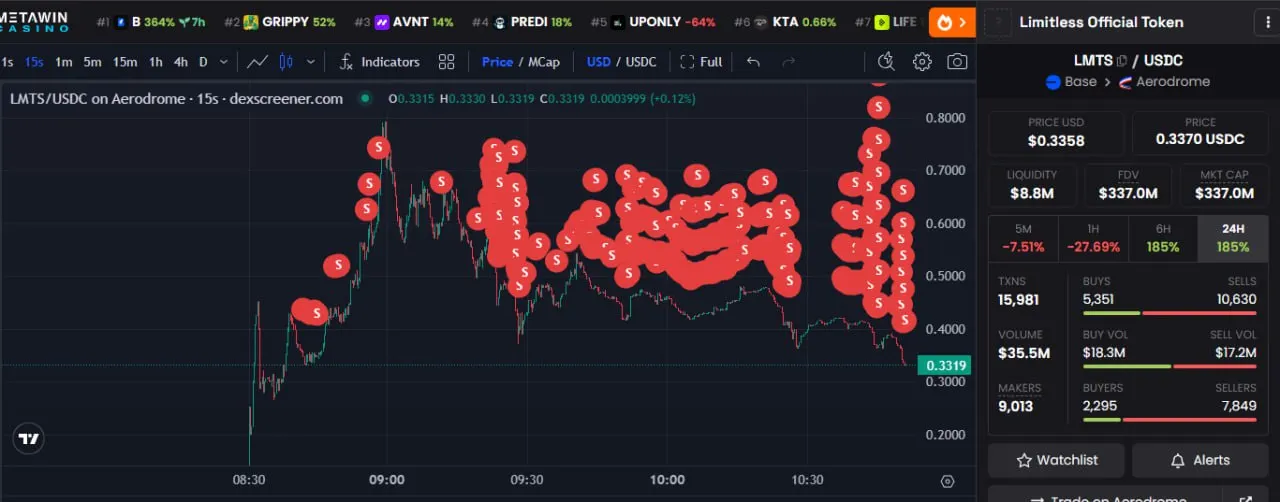
The market began to exercise caution. This felt too much like a carefully orchestrated cash-out. At this moment, public opinion showed a clear fracture.
CJ's Response: Explanation or Declaration of War?
As FUD sentiment spread, Limitless CEO CJ finally stepped in to respond.
On October 22 at 23:43, he wrote on X, “The token is a long-term game, and the on-chain market maker mechanism is operating as designed.”
CJ explained that the capital flow seen in the market comes from the team’s buyback plan, especially during the airdrop recipients' selling phase; he emphasized that the project has not yet listed on centralized exchanges, but buying pressure is strong, and price targets have been raised.
The tone of the last sentence was quite firm: “For those spreading FUD, we are ready to be your counterparty. For believers, we have just begun.”
This response felt like both an “explanation” and a “declaration of war.”
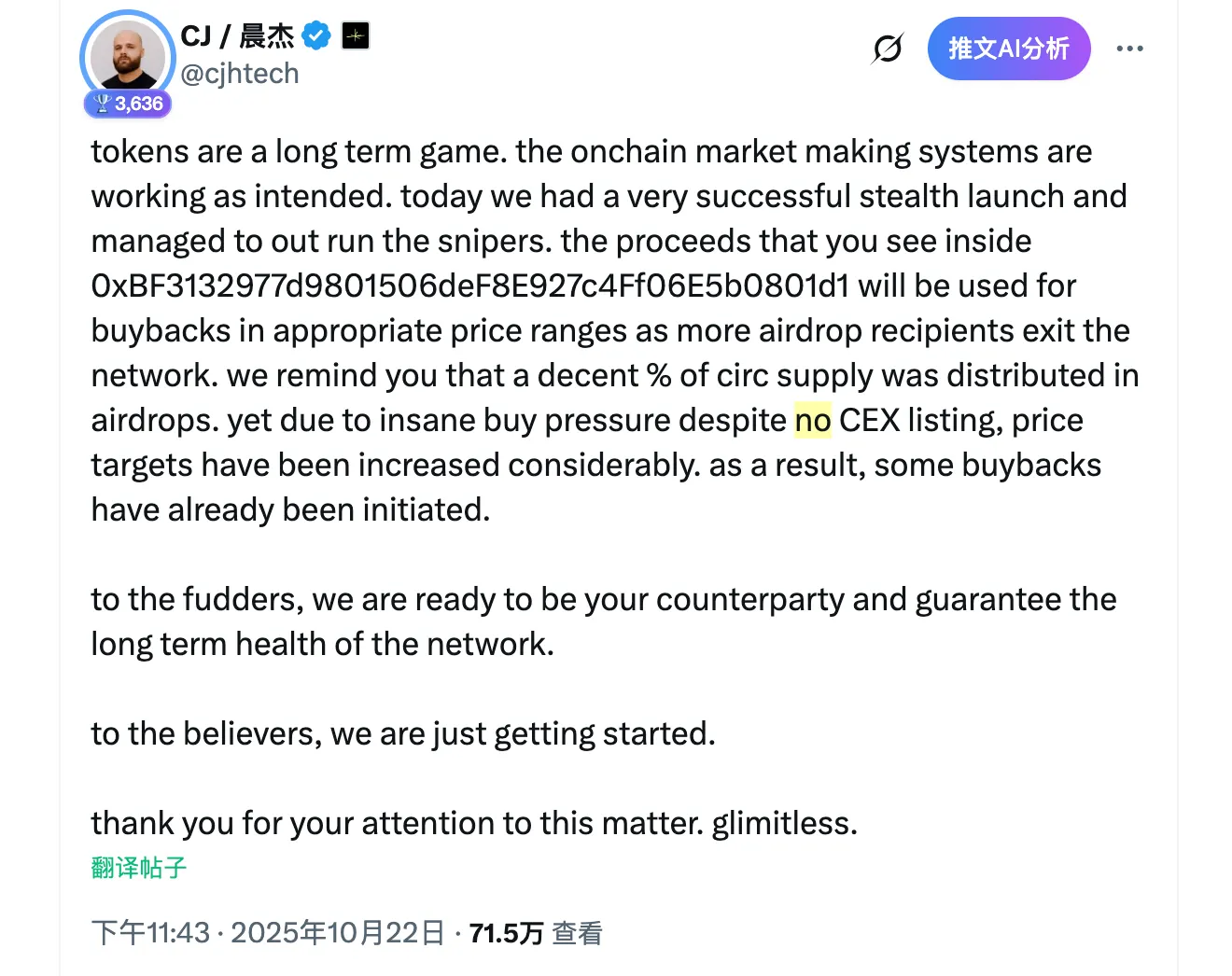
This made the direction of the event more subtle: on the surface, the team was stabilizing the market, but in reality, the community's trust had already begun to fracture.
What is Secret Launch?
The term “secret launch” may be unfamiliar to many. Simply put, it is a defensive mechanism used by project teams to prevent tokens from being sniped by bots at the initial launch, which could lead to severe price volatility.
The usual approach is to quietly deploy the contract, conduct small-scale testing, and confirm that there are no significant buying or arbitrage risks before publicly announcing the token contract address, allowing the market to trade freely.
In this TGE of Limitless, the team claimed to have adopted this strategy. According to on-chain data, the creation time of the LMTS token was only about 21 hours before its official announcement. During this period, the project team completed token distribution and contract deployment, only officially announcing the contract address after confirming everything was “safe.”
From the results, this approach did help Limitless avoid technical sniping, but it also made it harder for outsiders to trace the early capital flows.
The intention of defense and the consequence of opacity have now become a new point of controversy.
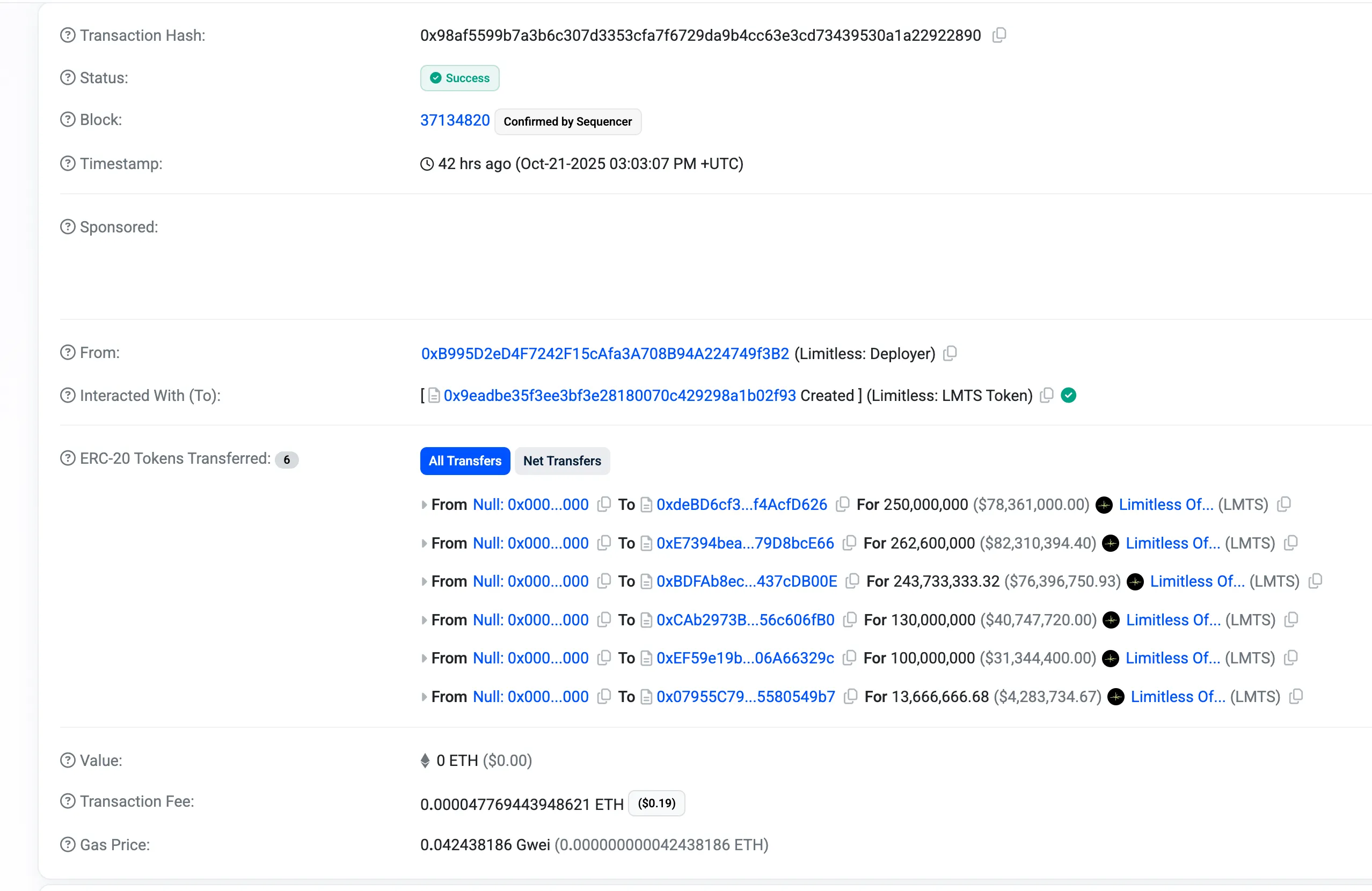
Summary
As of now, this incident is still unfolding, and many doubts remain unresolved.
For example, the wallet alleged to be associated with the team seems to hold tokens that are not part of the officially disclosed 25% team allocation (according to on-chain analysis, the 40 million tokens initially held by that wallet came from the “ecosystem incentives” portion). Why is this portion of tokens not subject to a lock-up period? In the token economic model, only 2.45% of the airdrop and early incentive portions are immediately unlocked. Additionally, why were these so-called “internal buyback” operations not disclosed in advance?
These questions currently have no answers.
Market sentiment is gradually cooling, and the price of LMTS seems to have sunk to the bottom of a lake — calm, yet with a hint of oppression.
免责声明:本文章仅代表作者个人观点,不代表本平台的立场和观点。本文章仅供信息分享,不构成对任何人的任何投资建议。用户与作者之间的任何争议,与本平台无关。如网页中刊载的文章或图片涉及侵权,请提供相关的权利证明和身份证明发送邮件到support@aicoin.com,本平台相关工作人员将会进行核查。
